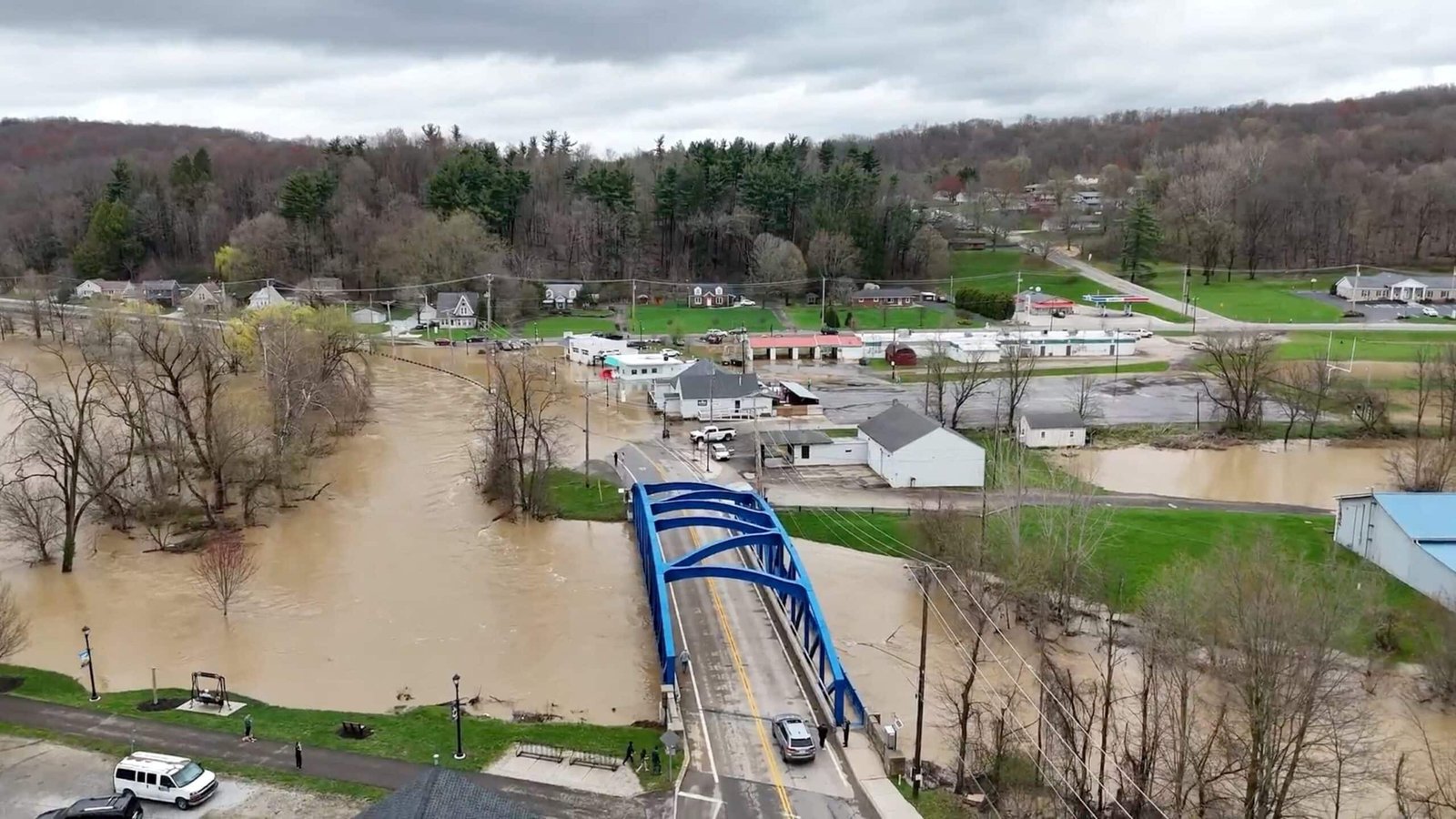How Bunker-Busters and B-2 Stealth Bombers hit the heart of the Iranian nuclear program

Name Name Name “Operation Midnight Hammer,” a secret US precision attack on Iran’s nuclear facilities launched last night was the biggest strike using B2 bomber in history and that was the longest flight involving the fleet since 2001, Pentagon officials said on Sunday.
The mission includes the first use of a large -magnitude -weapons penetrator bomb, or MOP, which was previously only used in the role of testing, according to officials.
“Iran’s nuclear ambition has been eliminated,” said US Defense Minister Pete Hegseth during the press briefing Sunday morning at the Pentagon, after the attack.

Defense Minister Pete Hegseth was accompanied by the Head of the Combined Head of the Air Force Staff General and Caine spoke during a press conference at Pentagon, June 22, 2025 in Arlington, Virginia.
Andrew Harnik/Getty Image
More than 125 aircraft participated in the mission, including seven B-2 stealth bomows launched from the United States continent shortly after midnight east and refuel several times in the air when they flown 18 hours to reach their target, General and Caine, the Chair of the Chief of Staff of the Joint Staff, said during the press direction. Other aircraft that participated in the mission include B-2 bombers used as bait, as well as fueling tanks, fighters escorting, and drones that provide intelligence, supervision and acquisition of targets, according to US officials.
Caine said that exactly after 2 am, Iran, B-2 bomber began to drop 14 shipping bombs in strikes two Iran-Situs Natanz nuclear facilities and Fordo. Each shipping bomb measuring about 20 feet in length, weighing 30,000 pounds and able to penetrate 200 feet in the target before exploding.

The Chairman of the Chief of Staff of the Joint Air Force and Caine discussed the details of the strike mission in Iran during a press conference at Pentagon, June 22, 2025 in Arlington, Virginia.
Andrew Harnik/Getty Image
Caine called “Operation Midnight Hammer” as “complex mission and high risk.”
A total of 13 B-2 bombers took off at the same time on Saturday morning from the Whiteman Air Force Base in Missouri, according to Caine. Six B-2 bombers were sent to the Pacific Island of Guam as a temporary feed for seven bombers used to target Iran’s underground nuclear facilities calmly to the east to carry out a mission with a little communication to avoid detection, said Caine.

Defense Minister Pete Hegseth and Chief Chief Joint General and Caine spoke during a press conference at Pentagon in Washington, June 22, 2025
Alex Brandon/AP
Right before dropping their cargo in Iran’s nuclear facilities, Caine said two dozen Tomahawk shipping missiles were fired on the Isfahan nuclear site in Iran from US submarines positioned in the region.
Tomahawks was fired before the B-2 bombers carried out their air strikes, said Caine. However, because of their slower flight time and the distance they had to travel, Tomahawk missiles did not attack their targets in Isfahan until shortly after the B-2 bomber dropped their 14 bombs.
It is not clear whether the B-2 bomber sent to Guam has landed there. All 13 bombers are expected to arrive back at the Whiteman Air Force base on Sunday afternoon, according to officials.
After the attack, President Donald Trump spoke to the country from the White House with Vice President JD Vance, Hegseth, and State Secretary Marco Rubio stood behind him.
“A short time, the us military carried out massive precision strikes on the three key nuclear facilities in the Iranian regime: Fordo, natanz and isfahan. Everybody heard those names for years as they built this horribly destructive. Iran’s nuclear enrichment capacity, and a stop to the nuclear threat pose by the world’s number-one-one sponsor of terror, “Trump said.
The President added, “Tonight, I can report to the world that the attack is a spectacular military success. Iran’s main nuclear enrichment facilities have been fully and completely eliminated.”

This satellite image provided by Maxar Technologies shows a closer view of the crater and ash in the ridge at the Ferdo enrichment facility in Iran after the US strike, June 22, 2025.
Satellite image 2025 Maxar Technologies
During the Sunday press briefing, Hegseth said, “There is no other country on the planet Earth that can carry out operations,” echoing the statements that Trump had posted on the social platform of the truth after the attack.
“This is a plan that takes months and a week -weeks to position and prepare so that we can be ready when the President of the United States calls,” Hegseth said. “It takes a lot of accuracy. This involves the highest operational and operational security.”
Caine said there were no Iranian troops or civil structures that were targeted and that throughout the mission, “We maintain an element of surprise.” He said “very few people in Washington” who know the time and nature of the plan and that the congress leaders were not given direction until the mission was ongoing.
Hegseth said the B-2 bomber, each with two crew, reached the target of the nuclear facility and hit them without ever being detected by Iranian troops, said the stealth aircraft entered and came out and returned without the world knowing altogether. “
Iran does not use a warrior missile or surface-to-air during the mission, said Caine.

A chart that was displayed during the press conference by the Secretary of Defense Pete Hegseth and the Chief of Chief of Staff of Joint and Caine at Pentagon in Washington, June 22, 2025.
Department of Defense Through AP
Before the mission, Israeli troops had spent about 10 days paralyzing Iran’s air defense capabilities, destroyed many of its fighter aircraft and left the country’s military airfield badly damaged.
While Hegseth and the White House furrowed the mission as a big success, an assessment was being carried out to determine the level of damage to the nuclear facility, said Caine during the direction of Sunday morning.
“The assessment of the battle damage is ongoing but our initial assessment, as the chairman said, is that all our precision ammunition has hit where we want them to attack and have the desired effect, which means, especially the main target here, we believe we achieve the destruction of the ability there,” Hegseth said.
Hegseth emphasized that the purpose of the mission was to prevent Iran to develop nuclear bombs, the goal, according to the White House, the country was only a few more days to achieve.
Hegseth also said that the mission was not intended for regime changes in Iran. He said public and private messages were being sent directly to Iran through various channels, “giving them every opportunity to come to the table” and negotiate peaceful settlement.

The satellite image provided by Maxar Technologies shows damage to a large new building in all isfahan facilities in Iran after US Strikes, June 22, 2025.
Satellite image 2025 Maxar Technologies
“They understand exactly what America’s position is, what steps they can take to enable peace, and we hope they do it,” Hegseth said.
Hegseth said that while anything could occur in conflict, “The operation was not open:” We recognize that but this scope is deliberately limited, “he said.
According to Caine, troops in the region were not given a previous warning about the attack. After the strike, General Michael Erik Kurilla, Commander of the US Central Command (Centcom), oversees military operations in the Middle East and Central Asia, increasing the steps of protection of strength throughout the region, especially in Iraq, Syria and Bay, said Caine.
“Our troops remain vigilant and fully posted to respond to every Iranian retaliation or proxy attack, which will be a very bad choice,” Caine said. “We will defend ourselves. The safety of our service members and civilians remain our highest priority.”
This is a developing story. Please check again for updates.






